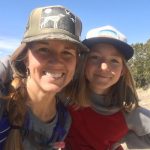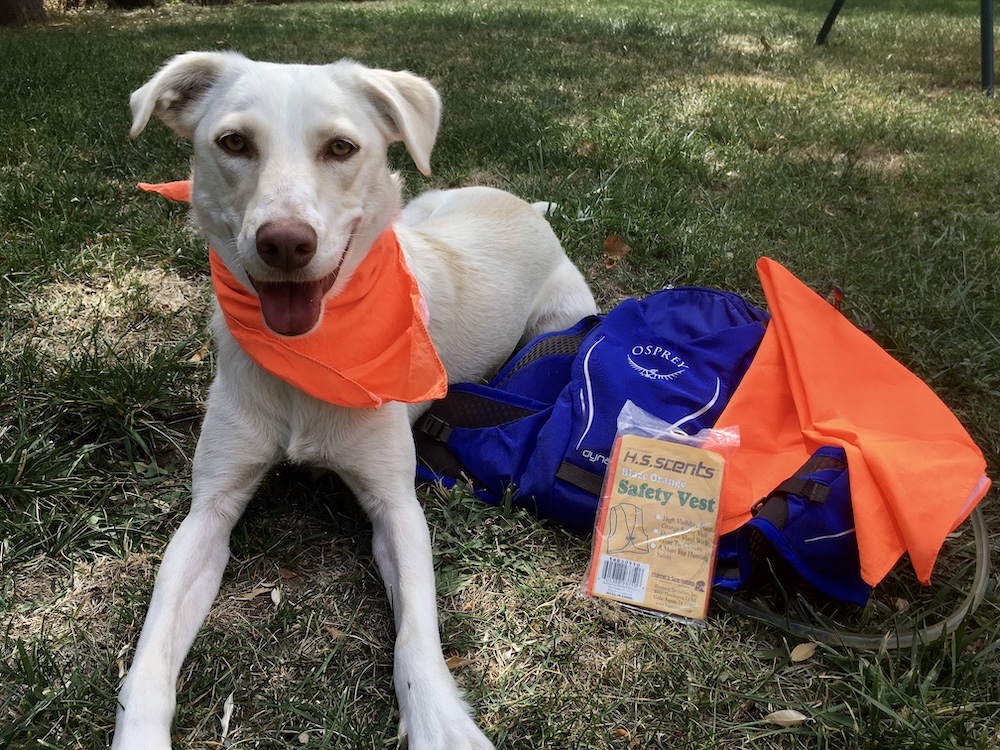Shared Spaces: Trail Running During Hunting Season

Share This Article!


Fall is here and change is happening. Summer adventures are winding down, schools are opening, crops are ready to harvest, leaves are turning, and the mornings are starting to carry a hint of winter’s crispness. It is undoubtedly a splendid time to be outdoors and many of us are clinging to the last days of dirt before winter blankets the high country.
For me, fall brings a bit of slowing down. There will be days when I trade my running shoes for boots and my purples and teals for camo and blaze orange. I will walk instead of run and I will sit in silence and solitude instead of giggling and unpacking the meaning of life with my friends. For me and thousands of others, it’s hunting season.
I’m a first-generation, self-taught hunter. And if you define success by a full freezer, I’m not a very good one. But I enjoy the experience: the pace, the attention to detail, and the opportunity to discover things that we so often rush right past. (There’s a life metaphor in there somewhere.) And if I am lucky enough to connect with a harvest, I am humbled by the experience and honored to bring an ethically-sourced meal back to my table.

Fall is the time of year when hunters and runners intersect in the backcountry, often with very different plans. On a given day I could be either and I am always thinking about both. Whether I’m in camo or my favorite TS gear, many of my additional considerations for backcountry travel are similar right now. So in honor of my seasonal wardrobe change, I offer you my officially unofficial ask-a-runner/hunter Q&A.
What’s happening in nature right now?
In early fall, mating season is kicking off, also called “the rut,” which means large animals are a little more restless than during the leisurely days of summer. The males are competing for status within a herd and demonstrating some pretty robust behavior. If ever there were a time to not try to take a selfie with a bull elk or moose, it’s now (the answer is actually never but really, really not now).
Also, animals are on the move due to changing weather conditions and diminishing food sources so you might see more tracks and poop on the trail where you normally wouldn’t in the summer months. Elk, for example, will be moving to lower elevation in search of grass once there’s too much snow up high. And migratory birds are starting their flights as well.
What should I be looking for?
I’m always on the lookout for signs I’m in someone’s house. That is, am I seeing a lot of animal tracks or other evidence like beds (animal-sized packed-down spots) in tall grass? Am I near something delicious like grass or shrubs? Or a water source?
And just as important, I think about what I can’t see. If I’m on a thick-brush/wooded trail with limited visibility ahead of me, for example, I slow down until I can see farther. I don’t want to startle or be startled by what or who is around the corner. (Your sense of smell can help you out here as well.)
A third thing to consider is the time of day. Early mornings and evenings are lower-light and lower-visibility, and the animals tend to be more active. Mid-day, there’s a lot of hiding in the trees, snacking and napping – for animals and hunters alike.
Who else is out there?
Runners have been sharing the trails with folx on mountain bikes and horses (and so on) all summer. Additional user groups emerge in the fall, with archery season having already started September 2 this year. There are also muzzleloaders in the field right now and rifle season is just around the corner. The Colorado Parks & Wildlife website lists the specific dates and is a great source for other information (you can find hunting season info on your local parks & wildlife sites). In addition to big game hunters, there are also people out hunting small game and birds.
What should I wear?
In addition to dressing for the weather, it’s a good idea to add some blaze orange. The legal requirement for big game hunters reads: “wear at least 500 square inches of solid daylight fluorescent orange or solid florescent pink material above the waist on an outer garment while hunting deer, elk, pronghorn, bear, or moose during a muzzleloading or rifle season. Part of the fluorescent orange must be a hat or head covering visible from all directions.” If big game hunters are required to dress like this in order to keep themselves safe, I generally find it’s worth thinking about myself when we’re sharing the same space. And you don’t have to give up your favorite running clothes to do it. Inexpensive orange vests, bandanas, and flagging tape are easy to come by at most hardware stores, some gas stations, and the entire internet. You can wear them or tie them to your pack to make yourself more visible. (Note: waterfowl hunters are not required to wear orange so you may occasionally see some folx without it.)
Do you run with your dog? They can wear orange, too – and while it’s important to know your local leash regulations and recommendations, orange is especially important for our off-leash friends. My dog wears a bright orange bandana ($2 at the Arvada Army Navy Surplus) and I’ve also seen people tie orange flagging to their dog’s collar or harness.

Ultimately, like any other time of year, risk assessment and preparedness are key. As womxn, and as (sometimes) solo travelers, we often carry a level of situational awareness and risk tolerance that’s unique to each of us. And we are discovering or have found our own systems that make us feel safer. As we enter hunting season, there are a few additional things to consider and whether that results in sticking to front-country trails for a bit or rocking that orange and getting out there, it’s still about what feels right for each of us on that trail, on that day – and listening to ourselves and planning accordingly.
To my Trail Sisters who are also headed into the field this season, what would you add?
About the Author

Share This Article!













One Response
Fun and informative article, thanks for sharing!